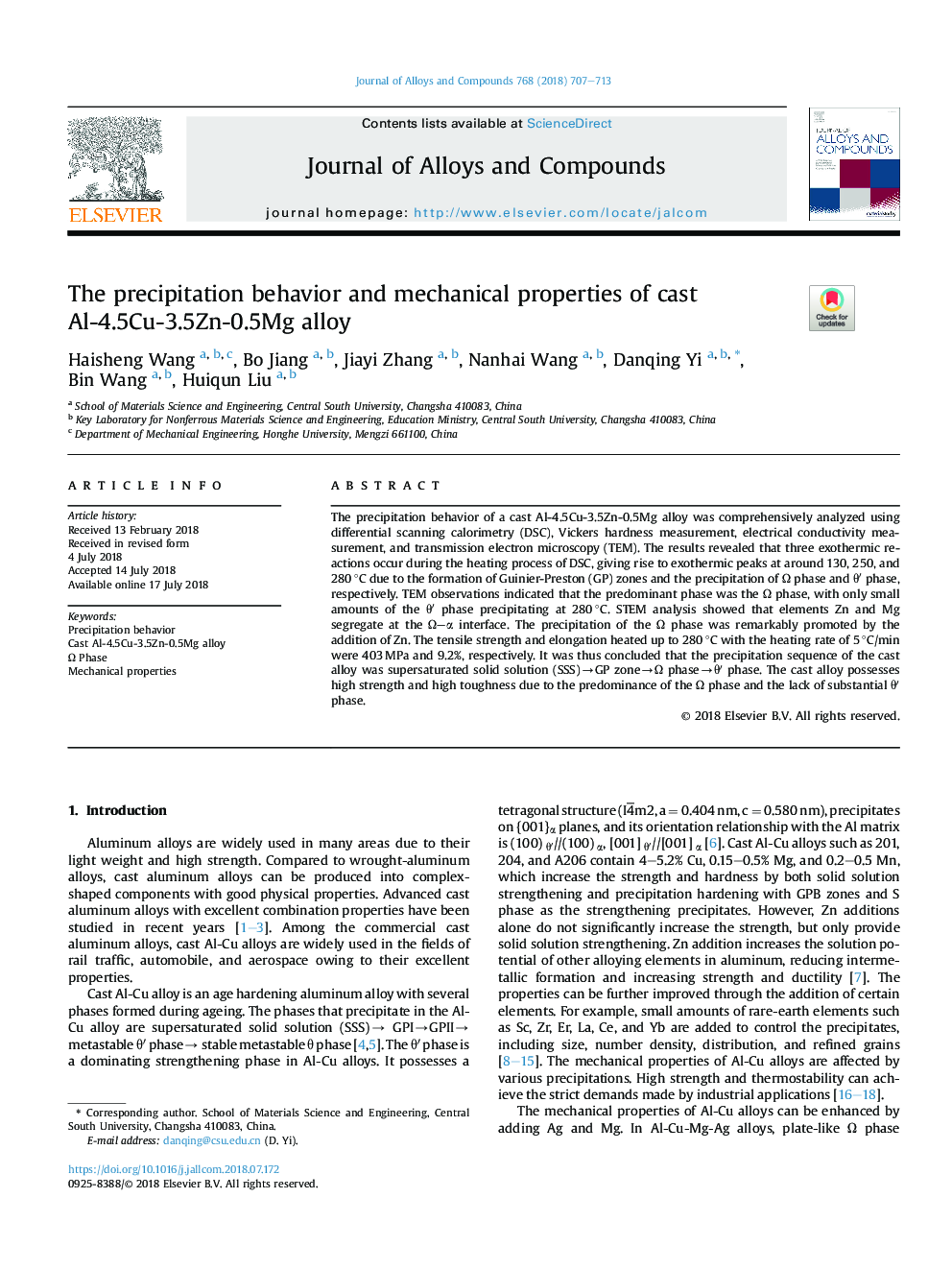| Article ID | Journal | Published Year | Pages | File Type |
|---|---|---|---|---|
| 7990255 | Journal of Alloys and Compounds | 2018 | 7 Pages |
Abstract
The precipitation behavior of a cast Al-4.5Cu-3.5Zn-0.5Mg alloy was comprehensively analyzed using differential scanning calorimetry (DSC), Vickers hardness measurement, electrical conductivity measurement, and transmission electron microscopy (TEM). The results revealed that three exothermic reactions occur during the heating process of DSC, giving rise to exothermic peaks at around 130, 250, and 280â¯Â°C due to the formation of Guinier-Preston (GP) zones and the precipitation of Ω phase and θⲠphase, respectively. TEM observations indicated that the predominant phase was the Ω phase, with only small amounts of the θⲠphase precipitating at 280â¯Â°C. STEM analysis showed that elements Zn and Mg segregate at the Ω-α interface. The precipitation of the Ω phase was remarkably promoted by the addition of Zn. The tensile strength and elongation heated up to 280â¯Â°C with the heating rate of 5â¯Â°C/min were 403â¯MPa and 9.2%, respectively. It was thus concluded that the precipitation sequence of the cast alloy was supersaturated solid solution (SSS)âGP zoneâΩ phaseâθⲠphase. The cast alloy possesses high strength and high toughness due to the predominance of the Ω phase and the lack of substantial θⲠphase.
Related Topics
Physical Sciences and Engineering
Materials Science
Metals and Alloys
Authors
Haisheng Wang, Bo Jiang, Jiayi Zhang, Nanhai Wang, Danqing Yi, Bin Wang, Huiqun Liu,
